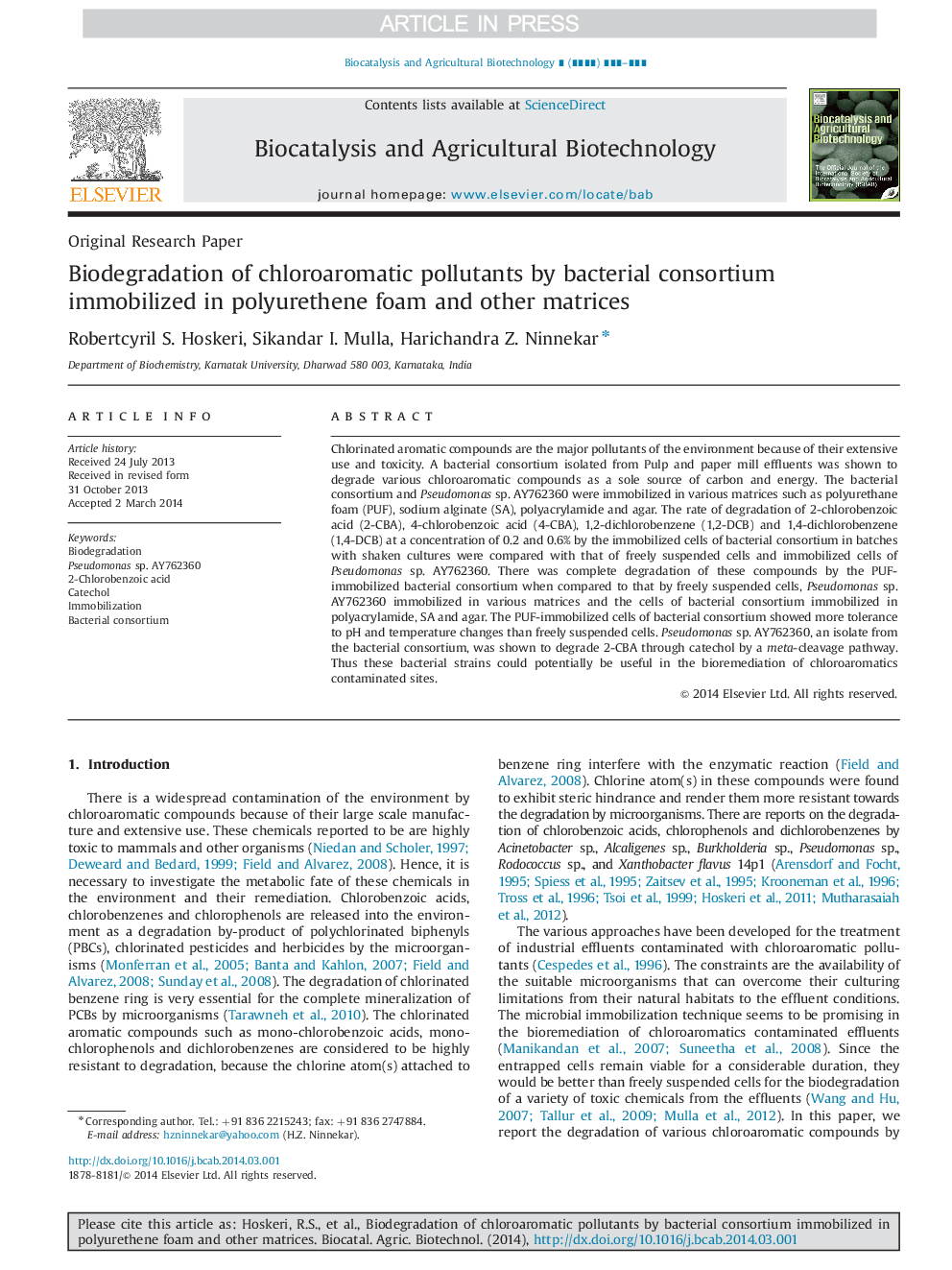| Article ID | Journal | Published Year | Pages | File Type |
|---|---|---|---|---|
| 10884514 | Biocatalysis and Agricultural Biotechnology | 2014 | 7 Pages |
Abstract
Chlorinated aromatic compounds are the major pollutants of the environment because of their extensive use and toxicity. A bacterial consortium isolated from Pulp and paper mill effluents was shown to degrade various chloroaromatic compounds as a sole source of carbon and energy. The bacterial consortium and Pseudomonas sp. AY762360 were immobilized in various matrices such as polyurethane foam (PUF), sodium alginate (SA), polyacrylamide and agar. The rate of degradation of 2-chlorobenzoic acid (2-CBA), 4-chlorobenzoic acid (4-CBA), 1,2-dichlorobenzene (1,2-DCB) and 1,4-dichlorobenzene (1,4-DCB) at a concentration of 0.2 and 0.6% by the immobilized cells of bacterial consortium in batches with shaken cultures were compared with that of freely suspended cells and immobilized cells of Pseudomonas sp. AY762360. There was complete degradation of these compounds by the PUF-immobilized bacterial consortium when compared to that by freely suspended cells, Pseudomonas sp. AY762360 immobilized in various matrices and the cells of bacterial consortium immobilized in polyacrylamide, SA and agar. The PUF-immobilized cells of bacterial consortium showed more tolerance to pH and temperature changes than freely suspended cells. Pseudomonas sp. AY762360, an isolate from the bacterial consortium, was shown to degrade 2-CBA through catechol by a meta-cleavage pathway. Thus these bacterial strains could potentially be useful in the bioremediation of chloroaromatics contaminated sites.
Related Topics
Life Sciences
Agricultural and Biological Sciences
Agricultural and Biological Sciences (General)
Authors
Robertcyril S. Hoskeri, Sikandar I. Mulla, Harichandra Z. Ninnekar,
